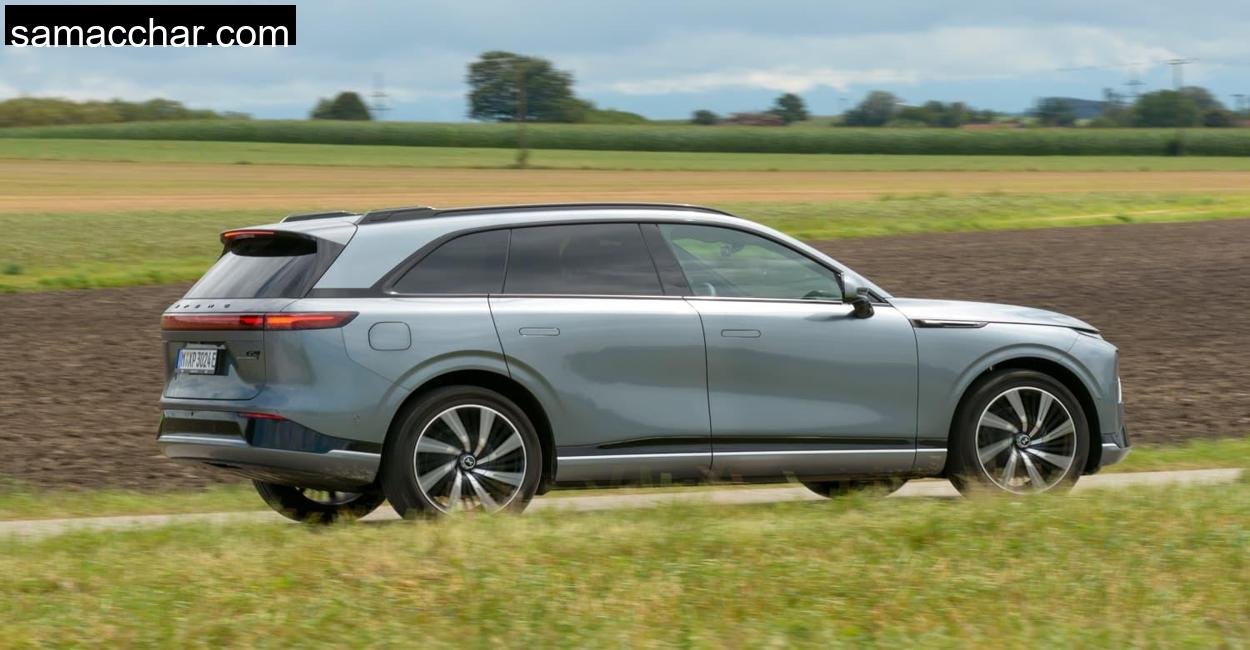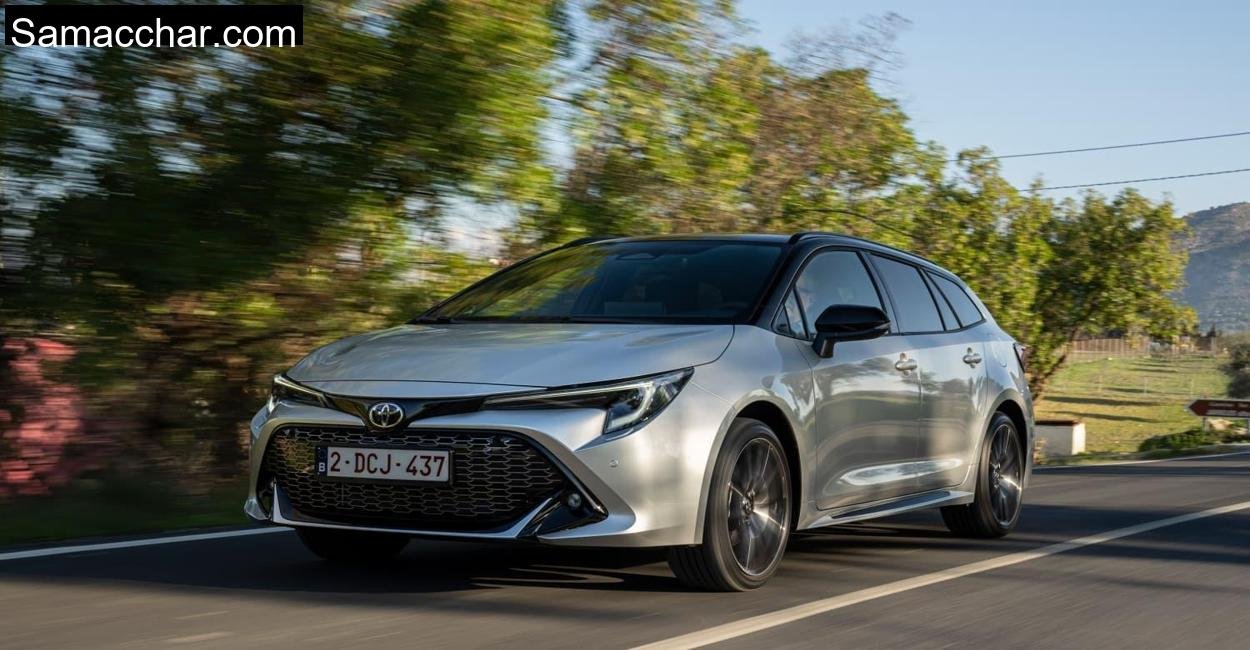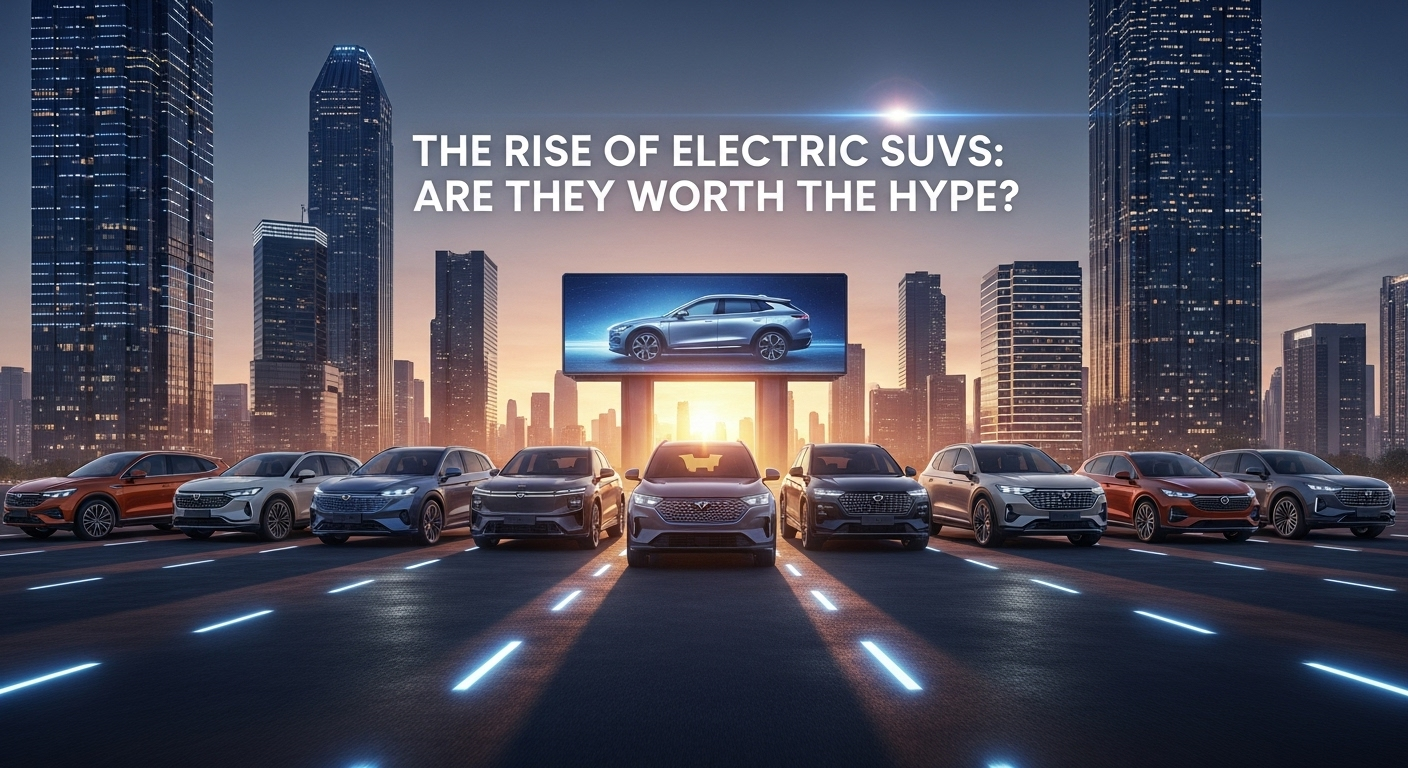Like a Nio EL6: Only Cheaper
At nearly 4.90 meters long, the XPeng G9 makes an immediate impression, and it’s not just the size. From the narrow LED light bars that span the front and rear to the high shoulder line and short overhangs, the design looks sleek, confident, and unapologetically modern.
It gave me Nio EL6 vibes, but with a crucial difference. The XPeng G9 starts at just €57,600. For that, you get a fully electric SUV with a 78 kWh battery. The 98 kWh “Long Range” version, which I drove, adds another €4,000. Still way under the Nio, which starts around €65,000. And if you want everything, performance, luxury, range, the top trim with 550 hp and AWD tops out at €69,600. That’s compelling.
The G9 didn’t just look good as I rolled into the winding forest lanes; it felt immediately at home. Despite its size, it never felt unwieldy.
XPeng G9: Finely Crafted Interior
Climbing into the XPeng G9 for the first time was an event. You don’t expect this level of refinement from a “new” brand. The materials feel premium, not just visually, but to the touch. The dash, doors, and even grab handles are foam-padded and finished in synthetic leather. Nothing feels hollow or cheap.
Seats? Wide, soft, but supportive. Heated, ventilated, and fully powered, front and rear. Rear passengers even get electrically adjustable backrests, and I could sit behind my own 1.85m driving position with room to spare for my knees and head. The Soonwald can get humid in the afternoon, but the cooled seats kept things civilized.
Trunk space? 445 liters with the seats up, 1,605 liters with them folded down. And a bonus: a frunk with 71 liters for charging cables or muddy hiking boots.
Cockpit with Two Giant Touchscreens
Sit inside the G9 and you’re greeted by two massive 15-inch touchscreens, one for the driver, one for the front passenger. It feels like sitting inside a lounge with its own in-flight entertainment. While driving along the Soonwald’s winding roads, my co-pilot played around with navigation settings and music playlists, all without bothering me.
The avatar assistant, a floating astronaut, responds to voice commands. Mostly. It’s far from perfect and only speaks English for now, but XPeng promises a German update soon. I hope it includes better mirror and steering adjustments, doing that through a screen was clunky.
There are almost no physical buttons, which can be frustrating. Want to turn on the fog lights? Three menu clicks. Mirrors? Another submenu. Sometimes, old-school buttons just make more sense.
The XPeng G9 is Amazingly Quiet
On forest roads, noise matters. You want to hear the wind rustling leaves, not tire roar or wind buffeting.
The XPeng G9 is incredibly well insulated. Even on the coarse Soonwald pavement, there was barely a hum. At lower speeds, it’s whisper-quiet, thanks partly to Michelin Pilot Sport EV tires with built-in sound insulation. There’s a foam layer inside the tires that reduces vibrations and noise, and it really works.
Even at autobahn speeds, noise levels stayed low, measured just 65 dB(A). The steep windshield does introduce a bit of wind noise at high speed, but it’s nothing disruptive.
Up to 550 hp in Sport Mode
We didn’t need Sport mode for most of the test drive, but curiosity won. Engage Sport, floor the pedal, and this 2.4-ton SUV rockets forward with the kind of thrust you expect from a sports car, not a luxury cruiser. 0 to 100 km/h in 3.9 seconds. In the middle of a forest. That’s insane.
In Comfort mode, it’s far more composed, ideal for soaking up the scenery. Eco mode dulls the throttle, but boosts range, which is helpful on longer stretches. The only letdown? The steering. It’s too light in the city and gets overly heavy at highway speeds, without adding much feedback. It’s something XPeng should definitely refine.
800 V Technology: Up to 300 kW Charging Power
Charging is where XPeng really shows its ambition. With 800V architecture, the G9 can charge at up to 300 kW under ideal conditions. In our test, we peaked at 293 kW. From 10 to 80 percent in just over 20 minutes. That’s a game-changer for long-distance travel.
I stopped at a 300 kW charger outside the forest, grabbed a coffee, and came back to 349 km of range added. Just like that.
But AC charging? That’s a sore point. The onboard charger maxes out at 11 kW. If you use a 22 kW AC station, it’ll still take over 9 hours to fully charge the big battery. And in cities where you’re penalized for long AC sessions, that’s a downside.
Assistance Systems Not Perfect
The XPeng G9 comes loaded with driver assistance: adaptive cruise control, lane keeping, and a semi-automated highway driving system. On paper, it’s great.
In practice, not quite there yet. Lane centering feels hesitant, and the system sometimes overreacts to small bends. The adaptive cruise works well enough, but I didn’t fully trust the lane changes. This is one area where German and Korean brands still lead.
There’s a promise of continuous over-the-air updates, and the system might improve with time. But as of now, I’d call the assistance package competent, not cutting edge.
XPeng: Purchase Through Traditional Dealers
Unlike Tesla or Nio, XPeng doesn’t force you to buy online or through a smartphone app. They’ve partnered with traditional dealerships in Germany. That means you can see, touch, and test drive the car before signing anything.
Personally, I appreciate this. There’s something reassuring about walking into a real showroom, talking to real people, and not relying on an app to handle everything. For many buyers, that’s still important.
Conclusion
The XPeng G9 surprised me more than any SUV I’ve driven this year. It’s powerful, luxurious, spacious, and extremely quick to charge. Its flaws, some clumsy screen menus, inconsistent assistance systems, and sluggish AC charging, are forgivable when you look at the bigger picture.
XPeng isn’t playing catch-up anymore. In many areas, they’ve leapfrogged the competition. And if this is what they can do after just ten years, imagine what’s coming next.
Testing it in the Soonwald made the experience richer, peaceful forest serenity, brutal performance bursts, and barely a whisper from the cabin. The G9 didn’t just hold up; it impressed..










